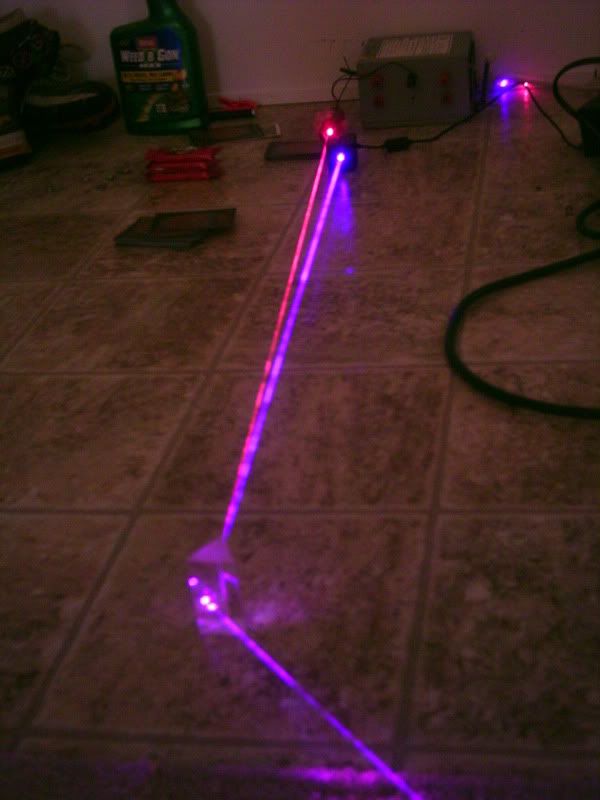- Joined
- Mar 13, 2011
- Messages
- 2
- Points
- 0
Hi, I'm new to lasers and I really want to learn more about them. I don't own any lasers of my own (yet), or else I would try the following requests on my own.
I really want to see what would happened if two very carefully placed lasers were shined into a prism at what would be their normal exit points from a normal light. The goal would be to try to create a single newly colored beam.
Then I really want to see what happens when two different clearly visibly colored beams are crossed from a 90 degree angle. would it create a new color at the point of the intersection? Then, what would happen if we introduced a third color (making RGB) from 3d. sorry, I don't know all of the correct terms yet... what I'm trying to explain, is to set up RGB laser beams on the X,Y,Z axises so that they intersect.
My theory is that it would created a white pixel in the center. If that works, it may be possible to create true holographs without the need for a surface.
Lastly, as a bonus... I think it would be really cool to see what it would look like to shine red, blue, and green lasers into a diamond... and play with the positions to see what kind of cool effects we could get.
If anyone that reads this has the materials, time, and patients to try my little experiments out... It would be so cool to hear of your results, and possibly see some pictures and videos. And it would be even more cool to hear about the different findings from different types of lasers, with different wattages.
I've been searching all over the internet, and have failed miserably at finding pictures/videos of these types results. I assume they weren't special or phenomenal enough to post on the internet, which is a little frustrating, because I'm sure there are plenty of people like me wondering what would happen.
I really want to see what would happened if two very carefully placed lasers were shined into a prism at what would be their normal exit points from a normal light. The goal would be to try to create a single newly colored beam.
Then I really want to see what happens when two different clearly visibly colored beams are crossed from a 90 degree angle. would it create a new color at the point of the intersection? Then, what would happen if we introduced a third color (making RGB) from 3d. sorry, I don't know all of the correct terms yet... what I'm trying to explain, is to set up RGB laser beams on the X,Y,Z axises so that they intersect.
My theory is that it would created a white pixel in the center. If that works, it may be possible to create true holographs without the need for a surface.
Lastly, as a bonus... I think it would be really cool to see what it would look like to shine red, blue, and green lasers into a diamond... and play with the positions to see what kind of cool effects we could get.
If anyone that reads this has the materials, time, and patients to try my little experiments out... It would be so cool to hear of your results, and possibly see some pictures and videos. And it would be even more cool to hear about the different findings from different types of lasers, with different wattages.
I've been searching all over the internet, and have failed miserably at finding pictures/videos of these types results. I assume they weren't special or phenomenal enough to post on the internet, which is a little frustrating, because I'm sure there are plenty of people like me wondering what would happen.










